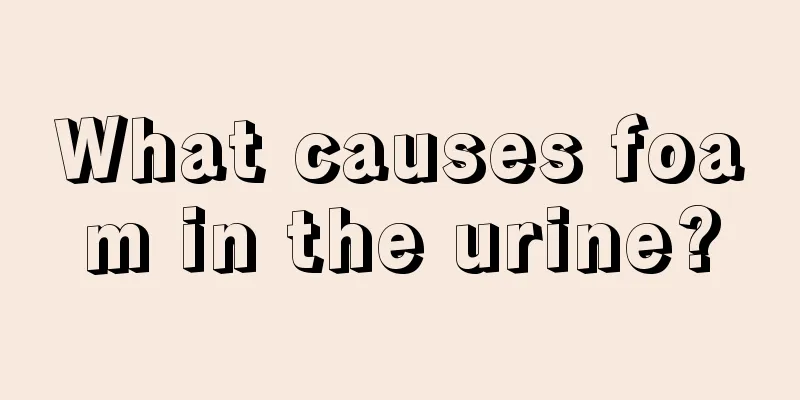White spots appear on the child's face

|
The appearance of white spots on a child's face is most likely caused by a symptom called vitiligo. Vitiligo also has certain clinical manifestations, so if white spots appear on a child's face, parents can first use certain methods to determine whether the child has vitiligo. If so, they must go to the hospital for a comprehensive examination, and then carry out targeted and effective treatment based on the specific cause of the disease. 1. Clinical manifestationsThere is no significant difference in gender, and the disease can occur in all age groups, but it is more common in adolescents. The skin lesions are depigmented spots, which are often milky white but can also be light pink, with a smooth surface and no rash. The boundaries of the white spots are clear, the pigmentation of the edges is increased compared to normal skin, and the hair inside the white spots is normal or whitened. The lesions often occur in areas exposed to sunlight and damaged by friction, and are often distributed symmetrically. White spots are often distributed according to nerve segments and arranged in bands. In addition to skin lesions, the mucous membranes of the lips, labia, glans penis and inner foreskin are also often affected. Most patients have no subjective symptoms, and a small number of patients experience local itching in the affected area before or during the onset of the disease. Vitiligo is often accompanied by other autoimmune diseases, such as diabetes, thyroid disease, adrenal insufficiency, scleroderma, atopic dermatitis, alopecia areata, etc.
It is often complicated by diabetes, pernicious anemia, alopecia areata, atopic dermatitis, thyroid disease, primary adrenal insufficiency, scleroderma, malignant tumors, etc. In terms of clinical manifestations, vitiligo can be complicated or secondary to multiple diseases. There have been many reports of vitiligo cases combined with some autoimmune and endocrine diseases in clinical practice. Such as: combined with hyperthyroidism or hypothyroidism, diabetes, chronic adrenocortical insufficiency and chronic active hepatitis. In addition, vitiligo is associated with pernicious anemia, halo nevus, alopecia universalis or alopecia areata, psoriasis, scleroderma, morphea, malignant tumors, drug rash, herpes zoster, bronchial asthma, atopic dermatitis, rheumatoid arthritis, myasthenia gravis, chronic subcutaneous candidiasis and eye diseases, as well as complications of dermatitis herpetiformis, acromegaly, parapsoriasis, chronic persistent erythema, porphyria cutanea tarda, lichen sclerosus and other diseases. There have also been recent reports of vitiligo occurring in HIV-infected people and people with myelodysplastic syndrome.
1. Medication (1) Oral administration of psoralen and its derivatives such as methoxsalen followed by exposure to ultraviolet light. (2) Long-term use of large doses of vitamins such as B vitamins, vitamin C, and vitamin P. (3) Treatment can include taking copper-containing drugs, such as 0.5% copper sulfate solution orally. (4) Oral immunomodulatory agent levamisole, intramuscular injection of freeze-dried BCG, oral administration of bovine placenta, etc. (5) Topical application of skin irritants It causes inflammatory reaction in the skin and promotes pigmentation. Commonly used ones include 30% psoralea corylifolia tincture, nitrogen mustard alcohol, phenol (pure carbolic acid), 25%-50% trichloroacetic acid, blister beetle tincture, etc. This method is only suitable for small skin lesions, and blisters may appear on the lesions after application. (6) Corticosteroids: Various corticosteroids such as beclomethasone dipropionate ointment, halometasone cream, triamcinolone urea ointment, etc. are used for local packing treatment. 2. Surgery Patients with stable skin lesions and no progression can undergo autologous epidermal transplantation. 3. Depigmentation therapy It is suitable for those with large skin lesions that exceed more than half of the body surface area. 3% to 20% hydroquinone monobenzyl ether cream can be applied externally. 4. Physical therapy Treatment is with narrow-wave ultraviolet light, long-wave ultraviolet light or 308nm excimer laser. |
<<: The baby suddenly had cramps and his lips turned purple
>>: What to do if your baby's neck is red
Recommend
What nuts are good for young children?
Many parents believe that nuts are good for adult...
The child has a fever and his body is hot and his feet are cold
Children usually won’t tell when they have a feve...
Treatment of clubfoot in newborns
We may have all seen the situation of inversion o...
Is it okay for a newborn baby not to cry?
When babies are born, most of them will cry loudl...
What should I do if my child’s tonsils are red and swollen?
Tonsillitis in children is an inflammation of the...
How to treat Mycoplasma pneumoniae infection in children?
If children develop this disease, it is a microbi...
Can I go out to play if I have hand, foot and mouth disease?
After your baby gets hand, foot and mouth disease...
What does it mean when a child's urine protein is three plus?
The urine protein test report may show three plus...
What to do if the child cries
It is quite common for children to cry. If the ba...
Symptoms of systemic lupus erythematosus in children
Everyone must have talked about systemic lupus er...
What to do with pleural effusion in children
Pleural effusion is actually a harmful disease. O...
Why does a newborn baby always make noises while sleeping?
During the growth period of newborns after birth,...
What are the symptoms of heat stroke in a three-year-old baby?
In the hot summer, people often suffer from mild ...
What should I do if my child still wets the bed at the age of seven?
For many people, bedwetting is an indelible memor...
What should I do if my baby has eye mucus?
I believe everyone knows what a baby is. If there...









